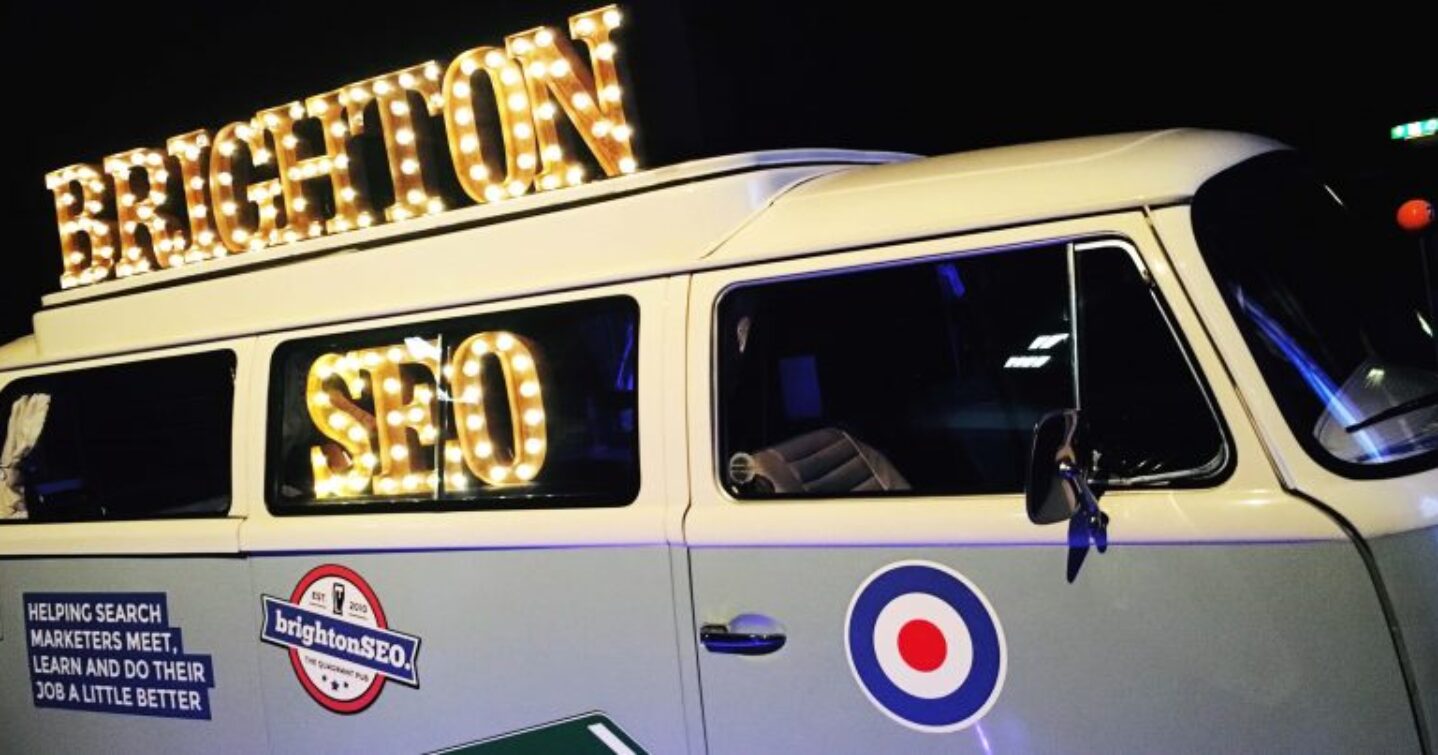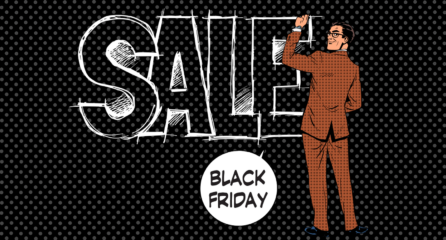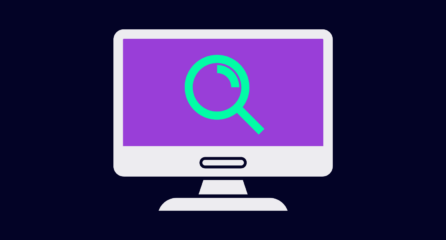April sees thousands of marketers head to the coast for Brighton SEO, one of the largest search marketing conferences in the UK. The event is a firm staple in the Loom calendar with the team excited for a day of insight, inspiration and knowledge-sharing.
There’s far too much for us to share everything we learnt that day, but we have pulled together our best Brighton SEO takeaways from the industry experts.
SEO
Paid Search
UX
Paid Social
Content Marketing
SEO
Highlight important information with schema markup
Appearing in the SERPs by Raj Nijjer
Search is no longer about the 10 organic search listings. There is now huge opportunity to rank outside the organic search listings, appearing in the knowledge graph, local pack, local knowledge graph, rich snippets and more.
To capitalise on these opportunities, you need to give search engine crawlers the relevant data through schema markup. Businesses should take a ‘digital knowledge management’ approach to their brands online, ensuring that all business data is consistent across all online platforms.
Optimise your website images now
Keywordless searches by Purna Virji
Visual search is growing quickly and it is prime for digital marketers to capitalise on. Searching without keywords is becoming increasingly possible with camera phones and ever evolving technology that is getting better at reading and interpreting images. Amazon invites users to take a photo of the product they want to buy and it will find a match for you. Google are set to release similar technology in the coming months.
There are huge social media opportunities for visual search, with Pinterest leading the way with ‘shop the look’ paid adverts, which enables users to shop looks instantly.
To make the most of this rising trend, Purna suggests having a strong image strategy. Take stock of all the images on your site, make sure they are high quality and optimised for search (through img alt tags & filenames), and experiment with visual ads across platforms.
Avoid crawl bloat on your sites
Crawl bloat and pruning by Charlie Whitworth
For large eCommerce sites, identifying and dealing with Crawl Bloat is essential. Crawl Bloat refers to the crawling of non-valuable URLs by Google that wastes crawl budget and could prevent Google from crawling and indexing important pages.
Start by preventing the crawling & indexing of pages such as:
- /search-results?q=
- /sessionkey=
- /search/
Then, audit your site to identify the following:
- Empty pages
- No value added pages
- Duplicate pages
- Soft 404s
- SPAM
- Hacked pages with malware etc.
You can then remove these pages too. Your site should now be crawled more efficiently by search engine bots.
Download these three tools to help with your SEO
Getting the most out of the SEO data you can get for free by Claudia Higgins
Keywords Everywhere: A free browser add-on that shows search and CPC on all Keyword search websites such as Ubersuggest and Answer the public. This is a great alternative to opening up a separate search in GA keyword planner.
Moz Bar: A free chrome extension from Moz that makes it easy to get advanced metrics and do all your SEO on the go. It overlays the search or site you’re working on and highlights key elements.
Moz Cast: An SEO weather report on Google’s algorithm for the last 30 days. It acts as an alarm for any changes in the SERPs. The hotter or the stormier, the more changes there have been in the algorithm.
Machine learning and user signals could soon reduce the importance on links
Links and rankings: The story in the data by Tom Capper
Tom Capper explored the evolution of links and their continued importance but he also looked at what could replace them as the main ranking signal. Machine learning and user signals could replace links and may already be doing so.
Brand could also replace links. According to this Google Q & A in March 2017, the key ranking factors are content and links pointing to your site.
Based on his data, he concludes that links are redundant but based on correlations and anecdotal evidence, it’s actually possible that links ARE important.
He suggests that are now two tiers that search results could be grouped into:
- The top tier is home to well-known, data-rich, authoritative brands – Backlinks don’t count for much here
- The second tier includes all other websites – Here, backlinks could play a vital part of pushing a site into the top tier
Valuable actions:
- Carry out rigorous user testing e.g. Panda surveys, CTR experiments and CRO
- Win at brand awareness and perception
If you want to find out how Loom incorporate SEO into our joined-up digital marketing package, you can find out more here – SEO services.
Paid Search
Bing is not a channel to ignore anymore
Bing is bigger than you think by Vikas Arora
Think of PPC advertising and most people think of Google. Vikas makes the case that Bing’s reach is growing and should not be ignored. Outside of traditional search, Bing has a growing syndication partner network, for example if you search on Siri you will be served Bing results. Bing also powers Yelp, Amazon Fire tablets, GoDaddy, TripAdvisor to name a few.
Bing ads also try and reduce the effort for marketers who are setting up on Bing, allowing users to directly import accounts from Adwords (including merchant centre data.) This means you can get set up on Bing relatively easily.
Finally Bing highlighted their audience, which is slightly more mature in age and with good disposable income.
Include user-specific promotions & offers in your PPC copy
How to use paid media to increase the lifetime value of a customer by Samantha Noble
With paid search results becoming ever more competitive, it is becoming increasingly important to get the most out of your clicks.
Through tailored audience lists, coupled with ad types such as countdowns and dynamic search ads, it’s possible to maximise the lifetime value of a customer by bringing them back to your site with user-specific promotions and offers.
By then sending these users to tailored landing pages specific to these offers, you can maximise the long-term value of your initial click, creating increased brand affinity in the process.
A/B test ad copy to find which messages appeal most to your users
The psychology of language for PPC by Sophie Turton
Even with all the new features and tools that AdWords has to offer, ad copy still remains an integral part of achieving a click and correctly setting user expectations to make sure that the click isn’t wasted.
Sophie argued that ads need to solve a user’s problem, and not just be a list of features that you want to show off. Through split testing of ad copy, she recommended writing one ad to appeal to the user’s personal needs, alongside a USP focused ad, in order to optimise which messages appeal most to your users.
Optimise your account & maximise results with PPC automation
PPC automation by Anu Adegbola
With most PPC managers happy to leave coding to the web developers, scripts don’t often feature within their accounts. However, Anu drew attention to a wealth of open source scripts from teams such as BrainLabs that can automate many day-to-day tasks.
From custom, automated bidding strategies to greater layers of data from the Auction Insights report, scripts are not actually as intimidating as you may have thought. Alongside large platforms such as Double Click that can automate ad creation and provide accurate inventory management, PPC automation can give you more time to optimise your account and maximise results for your budget.
Find out more about Loom’s PPC services
UX
How CTR & click length impacts the SERPs
User Experience Optimisation by Polly Pospelova
Google analyses metrics to determine if a user likes what is being returned for a search. If the metrics are positive, your site will move further up in the listings, if they are negative, your site will move down. The metrics Google uses include Click Through Rate and Click Length.
Click Through Rate: How many users are clicking on your result in the listings. This means it’s important to provide title tags and meta descriptions that are compelling and relevant to users.
Click Length: How long has a user spent on your site before returning to the search engine results pages? Google splits this into long and short clicks.
Short clicks happen when a user clicks & immediately bounces back to the search engine. This could be due to site speed or the quality of content on the site. To influence this metric you must provide high quality, engaging & relevant content that users can access instantly.
Find out more about Loom’s User Experience services
Paid Social
Reduce ad fatigue & general quality traffic with sequential advertising
How To Boss Sequential Advertising in Facebook by Tara West
Most people will have been served an ad from a brand they’ve never heard of, for a product that they’ve never even considered before. Tara provided a strong, easy to follow structure for sequential ads on Facebook in which you design a series of tiered ads with varying levels of audience targeting.
The first ad a user sees should introduce the brand, possibly with a video, but should never contain a sales message. If a user has engaged with this first ad, segment them by creating a custom audience, and serve them a range of products to spark their interest.
Then, create an even more tailored audience list based on users who have engaged with your product offering. Tara argued that at this point, you have earned the right to push for the sale, and your third ad creative can utilise carousel or product ads with a clear call to action that pushes users to buy on site.
This process minimises repetition, and tailors the user journey towards the purchase.
Top tips to get the most from Facebook advertising
Social advertising: Top tips to unlocking it’s true potential by Ned Poulter
With 79% of active internet users using Facebook, the potential for reaching your target audience is huge! Experienced paid social guru Ned focused on the following tips:
- Don’t use the ‘Boost Post’ button – always use Power Editor
- Use the pixel for remarketing and to track data
- Test single image ads against carousel ads to find which your audience prefers
- Experiment with optimisation e.g. change from optimise for link clicks to optimise for daily reach
- Lead gen forms make it easy for people to sign up to the newsletter. Create a custom audience to remarket to those who opened the form but didn’t complete it.
- Canvas adverts are going to be huge – check them out!
- Use the Facebook ads gallery on AdEspresso when designing new adverts to look for existing adverts in your sector
- Use content strategy discovery tools such as Audisense to find out when your users are most active and therefore the best time to post
Find out more about Loom’s Social Media Management services
Content
Dedicate time to pursuing different, counter-intuitive & unusual marketing avenues
Behavioural Science Keynote by Rory Sutherland
Sutherland’s talk dealt with human psychologically and marketing in broad humorous strokes whilst simultaneously providing details and examples that offered actionable insights.
The main takeaways from his superlative talk were that as marketers we should focus on changing perceptions rather than the reality. We can construct narratives that cleverly change the way people approach your products or services. Marketing is essential because it is hugely powerful in its ability to change perceptions to reveal the value in a product or service.
Sutherland also suggests that marketers should always pursue the different, counterintuitive and weird in 20% of their activity because every now and again this will strike gold. Most of the time the boring default wins but we should all be given a license to fail with the other 20%. He recommends that we test the counterintuitive as our competitors won’t be.
Creating content to fit user intent
Why SEO and content marketing must always be data-driven by Marcus Tober
When planning a piece of content you should drill down into the data, but how do you do it?
Use the following tools to find data trends and search info:
- Answer The Public or Searchmetrics content experience
- Moz keyword explorer – this tool provides a more sophisticated approach to mining long tail content.
Marcus used case studies to show how content relevance is a ranking factor for a site.
Find areas of high search volume and model content around this. Keyword intent has a direct correlation with the conversion funnel. Content should go from awareness and consideration to transaction and more consideration. The further you go down the conversion funnel the narrower the search volume becomes, but with a clearer intent.
Don’t just post content and forget about it! This is a waste of resource. Also, don’t for the ‘more content the better’ approach. The content you write needs to be specialist and you need to clean up and update your existing content so it’s user friendly and industry specific. Marcus recommends removing pages that have not received traffic in the last 18 months.
Read & act on Google’s latest Search Quality Evaluators Guidelines
It is super rare to get anything direct from Google as to what exactly it is looking for in website content. The recent update to the Quality Raters Guidelines provides just that – insight into what content Google wants to see rank in the SERPs.
These guidelines are written for the manual evaluators of online content – real life human beings. Many of the speakers at Brighton SEO 2017 urged digital marketers and content creators to commit to reading the 190 + pages. Chief amongst them was the brilliant Jennifer Slegg who urges us to read them to actually find out how to make your site a site that Google wants to rank at the top of the SERPs. She summarises it neatly in this simple repositioning of a question: “When judging your marketing don’t ask how many visitors have I had but instead how many have I helped?”
Be useful, simple and offer a solution
E-commerce content that’s worth a damn by Charlie Williams
With 55% of product searches starting on Amazon, it’s clear that customers are looking for clear and useful information about the products they’re interested in. Charlie gave the following tips on how to optimise product content:
- Look at your high converting pages and identify what makes them stand out.
- Identify your top 50 bestselling products and review on-page SEO
- Include videos wherever possible. If you don’t have a large resource try including unboxing videos on your site.
- Use surveys, your customer service team and existing Amazon reviews to find out what questions your customers are asking about your products
- Product copy should be long form – most successful pages are 25% longer than the average
Find out more about Loom’s Content Marketing services
Loom
If you have any questions on how to get the most from your website or any of our digital marketing services including PPC, SEO and content marketing, please get in touch on 0117 923 2021 or email us at [email protected].




